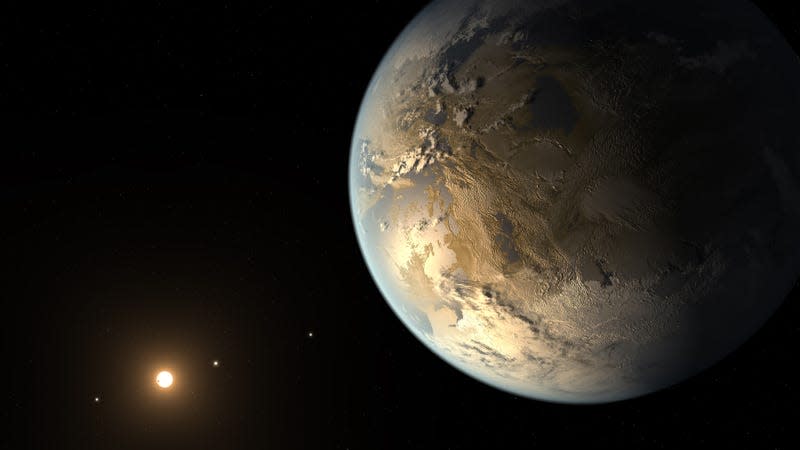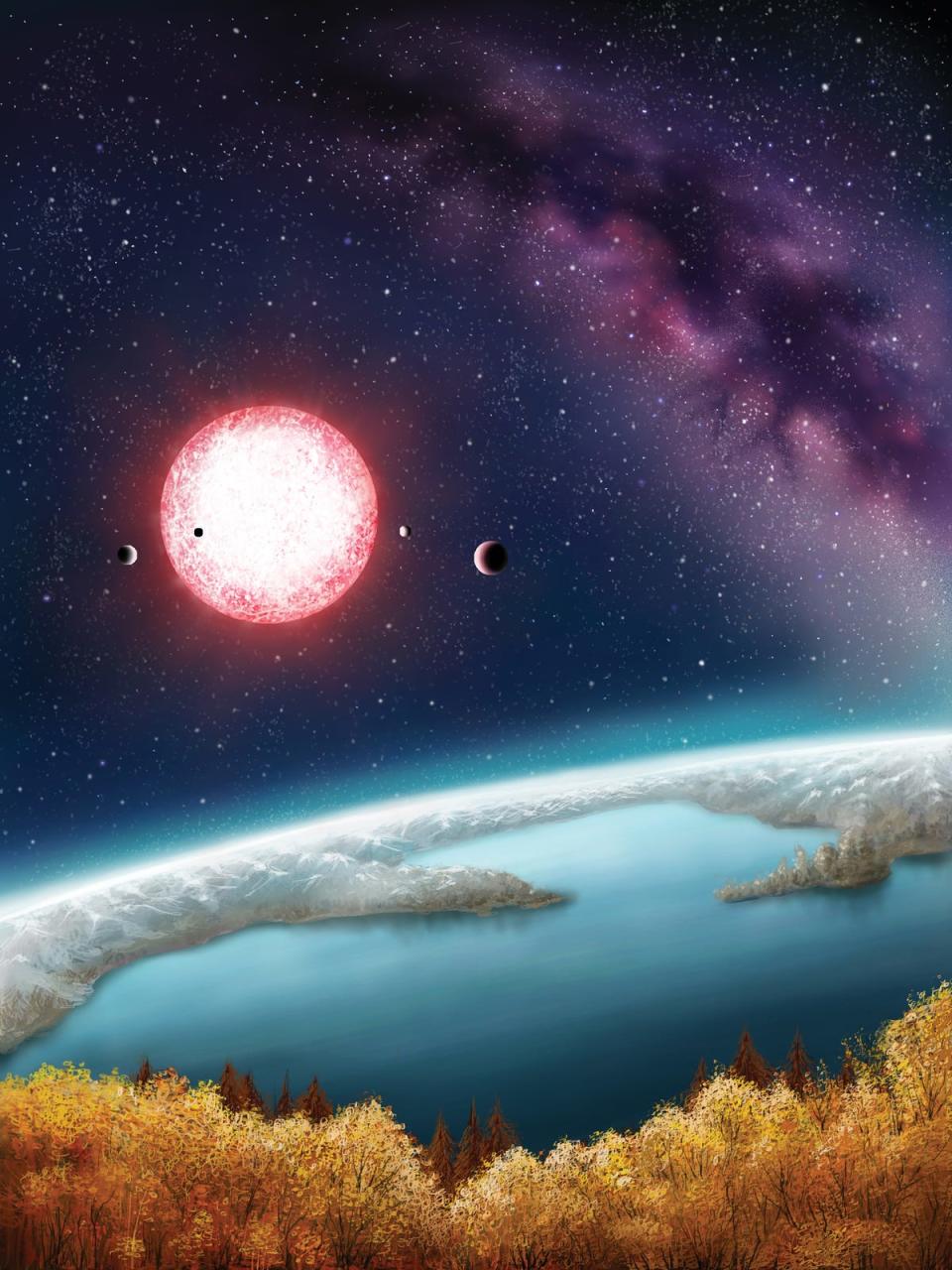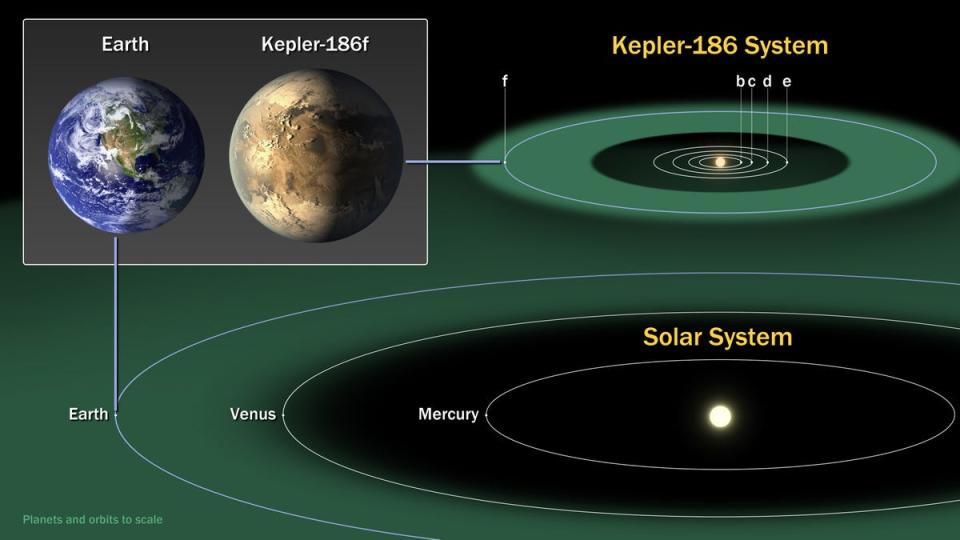NASA Announces An Earth-Size Planet That May Have Liquid Water

NASA Ames/SETI Institute/JPL-CalTech
Kepler-186f is less than 10% larger than Earth in size; its mass and composition are not known.
NASA and Kepler telescope researchers have just announced that they've discovered an Earth-size planet circling a dwarf star at a distance that would allow that planet to support liquid water.
The finding was also published Thursday, April 16, in the journal Science.
The announcement was made in a live press conference attended by a panel of scientists that included Douglas Hudgins of NASA's Astrophysics Division, Elisa Quintana of the SETI Institute at NASA's Ames Research Center, Tom Barclay of Bay Area Environmental Research Institute at Ames, and Victoria Meadows of the University of Washington and the NASA Astrobiology Institute at Ames.
Although the livestream has ended, questions for the scientists can still be submitted on Twitter using the hashtag #AskNASA.
The New Planet
The new planet, Kepler-186f, is part of a five-planet planet system that orbits a star named Kepler-186, which is cooler and about half the size and mass of our sun.
The newfound system is located about 500 light-years from Earth in the constellation Cygnus. Kepler-186f is the outermost planet and the only one circling its star at the right distance to have liquid water on its surface. Since liquid water is a key ingredient for life to exist, scientists call this sweet spot the "habitable zone."
On planets that are too close to their star, liquid water boils away. Those that are too far don't get enough energy from their star to support a climate and atmosphere similar to Earth.

Danielle Futselaar
The artist's concept depicts Kepler-186f, the first validated Earth-size planet orbiting a distant star in the habitable zone.
The planets were discovered using the Kepler spacecraft, launched in 2009, to look for Earth-size planets near stars like our sun. Kepler has found dozens of exoplanets in the habitable zone, but most of these are gas giants. Kepler-186f is the first confirmed plants that's roughly the size of Earth and potentially has an Earth-like atmosphere with water at its surface.
Size And Composition
Kepler-186f is less than 10% larger than Earth. Scientists confirmed the size of Kepler-186f by measuring how much light it blocked as it passed in front of its host star.
Scientists don't yet know the mass or composition of Kepler-186f, but think it could have a rocky surface based on planets of similar size — like Earth.
"There's a very excellent chance that it does have a rocky surface like the Earth," co-author Stephen Kane, of San Francisco State University, said in a statement.
Here's how the planets of our inner solar system compare to those of Kepler-186:

NASA Ames/SETI Institute/JPL-CalTech
The diagram compares the planets of the inner solar system to Kepler-186, a five-planet system about 500 light-years from Earth in the constellation Cygnus.
More From Business Insider

